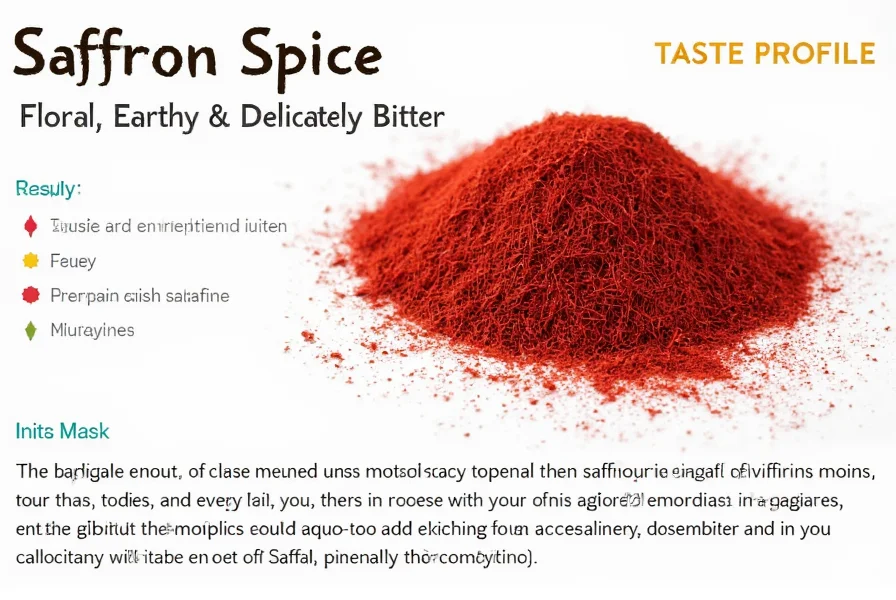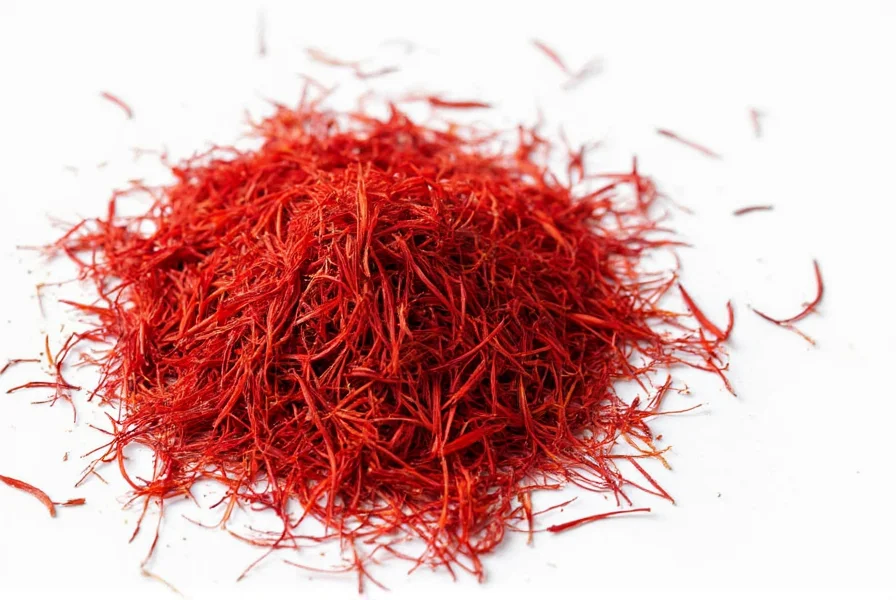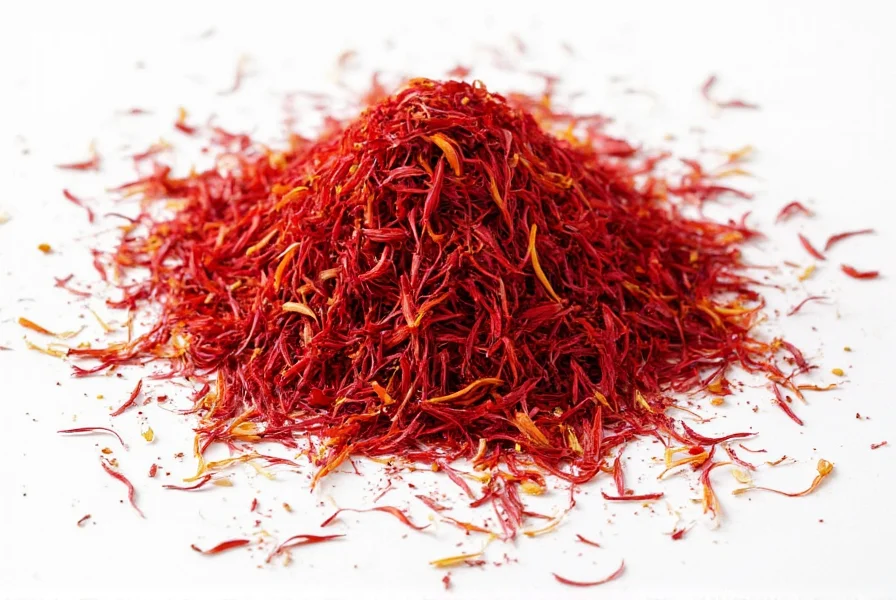Saffron spice has a distinctive flavor profile characterized by floral, honey-like notes with subtle earthy undertones and a delicate, pleasant bitterness. High-quality saffron delivers a complex aroma that's simultaneously medicinal, hay-like, and slightly metallic, with sweet floral nuances that distinguish it from all other spices.
When you taste pure saffron threads properly prepared, you'll experience a sophisticated flavor journey. The initial impression is a subtle floral sweetness reminiscent of fresh hay or dried grass, followed by warm honey notes that balance the mild bitterness inherent to this precious spice. Unlike many spices that deliver a single dominant flavor, saffron offers a layered sensory experience that enhances rather than overwhelms dishes.
Understanding what does saffron spice taste like requires recognizing its unique chemical composition. The primary flavor compounds crocin and picrocrocin create saffron's signature characteristics—crocin provides the golden color and subtle sweetness, while picrocrocin delivers that distinctive bitter note that transforms into saffron's characteristic aroma when heated. This complex interaction is why how saffron tastes in food differs from tasting the threads directly.
Many first-time users wonder why does saffron taste bitter. This mild bitterness is actually a hallmark of authentic saffron and serves an important culinary purpose—it balances the richness in dishes like paella, bouillabaisse, and Persian rice. The bitterness should never be harsh or unpleasant; rather, it should be delicate and quickly give way to the spice's floral sweetness.

Factors That Influence Saffron's Flavor Profile
The taste experience of saffron varies based on several critical factors that determine what real saffron tastes like versus inferior products:
| Factor | Impact on Flavor | Quality Indicator |
|---|---|---|
| Origin | Kashmiri saffron has deeper honey notes; Spanish tends more floral; Iranian balances both | Geographical indication affects flavor complexity |
| Thread portion | Red tips = strongest flavor; yellow styles = milder, less valuable | Pure red threads indicate premium quality |
| Freshness | Fresh saffron has vibrant aroma; old saffron tastes flat and dusty | Strong hay-like fragrance indicates freshness |
| Preparation method | Steeping in warm liquid releases flavor better than dry use | Proper preparation maximizes flavor extraction |
How Saffron Interacts with Other Ingredients
When exploring what saffron tastes like in dishes, you'll notice how it interacts differently with various ingredients. In rice dishes like Spanish paella, saffron's floral notes complement the starch, creating that signature golden hue and subtle complexity. In dairy-based preparations like Persian saffron ice cream, the spice's bitterness is beautifully balanced by sweetness while its floral notes shine through.
Chef Maria Rodriguez, a culinary expert with 25 years specializing in Mediterranean cuisine, explains: "Saffron doesn't compete with other flavors—it elevates them. When you understand the taste profile of saffron spice, you realize it's not meant to dominate but to provide that magical background note that makes everything else taste more like itself."
Common Misconceptions About Saffron's Taste
Many people searching for what does saffron taste like encounter misinformation. Let's clarify some common misunderstandings:
- Myth: Saffron should have a strong, overpowering flavor
Reality: Premium saffron is subtle—its power lies in how little you need to transform a dish - Myth: Bitterness indicates poor quality
Reality: That delicate bitterness is essential to authentic saffron's flavor balance - Myth: All saffron tastes the same regardless of price
Reality: Higher grades deliver more complex floral notes with less metallic aftertaste

Practical Tips for Experiencing Saffron's True Flavor
To properly assess what saffron spice actually tastes like, follow these professional techniques:
- Proper preparation: Never use saffron threads dry. Always steep 3-5 threads in 2 tablespoons of warm (not boiling) liquid for 15-20 minutes before adding to your dish
- Taste test method: After steeping, taste a single drop—the flavor should be floral and complex, not harsh or one-dimensional
- Storage matters: Keep saffron in an airtight container away from light; properly stored, it maintains flavor for up to two years
- Quantity guidance: Start with just 10-15 threads per serving—more isn't better as excessive saffron creates unpleasant metallic notes
When evaluating whether you've experienced authentic saffron taste characteristics, remember that genuine saffron should never taste like iodine or plastic—these indicate adulteration. The flavor should unfold gradually, with the floral notes emerging after the initial subtle bitterness.
How Saffron's Flavor Differs From Common Substitutes
Many people searching what does saffron taste similar to wonder about substitutes. While nothing truly replicates saffron's unique profile, understanding the differences helps appreciate its special qualities:
- Safflower: Often sold as "poor man's saffron" but lacks complexity—mostly provides color without saffron's nuanced flavor
- Turmeric: Offers similar golden color but with earthy, peppery notes rather than saffron's floral sweetness
- Annatto: Provides color and mild peppery flavor but none of saffron's distinctive floral-aromatic qualities
The reason why saffron tastes different from other spices lies in its unique chemical composition—over 150 volatile compounds contribute to its aroma, compared to just 30-50 in most other spices. This complexity explains both its distinctive flavor and its extraordinary cost.
Frequently Asked Questions
What does saffron taste like compared to other spices?
Saffron has a unique flavor profile unlike any other spice—floral and honey-like with subtle earthy notes and delicate bitterness. While turmeric provides color without the complex flavor, and safflower offers visual similarity but lacks depth, saffron delivers a sophisticated taste experience that enhances rather than dominates dishes.
Why does saffron have a bitter taste?
The mild bitterness in saffron comes from picrocrocin, one of its primary flavor compounds. This bitterness is actually a hallmark of authentic saffron and serves an important culinary purpose—it balances richness in dishes. In high-quality saffron, the bitterness should be delicate and quickly give way to floral sweetness, never harsh or overwhelming.
How can you tell if saffron is real by taste?
Real saffron has a complex flavor profile with floral, honey-like notes and subtle bitterness that evolves over time. Fake saffron often tastes like iodine, plastic, or has a one-dimensional flavor. Authentic saffron should never have chemical aftertastes. When properly prepared, real saffron releases its flavor gradually, with the floral notes emerging after the initial subtle bitterness.
Does saffron taste different when used in cooking?
Yes, saffron's flavor transforms when cooked. The heat activates saffron's compounds, mellowing the initial bitterness while enhancing the floral and honey notes. In liquid-based dishes like risotto or bouillabaisse, saffron integrates seamlessly, providing subtle complexity. In dry applications or when overheated, it can develop unpleasant metallic notes, which is why proper preparation (steeping in warm liquid first) is crucial for optimal flavor.











 浙公网安备
33010002000092号
浙公网安备
33010002000092号 浙B2-20120091-4
浙B2-20120091-4